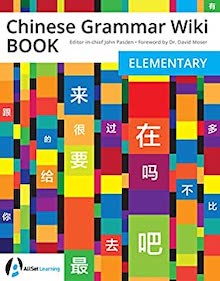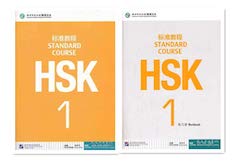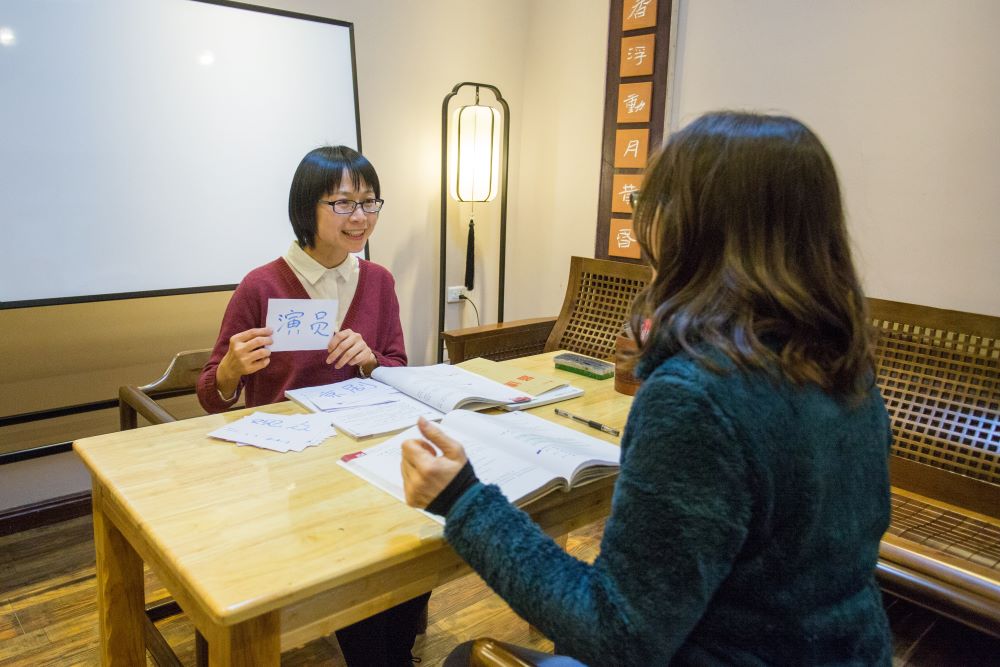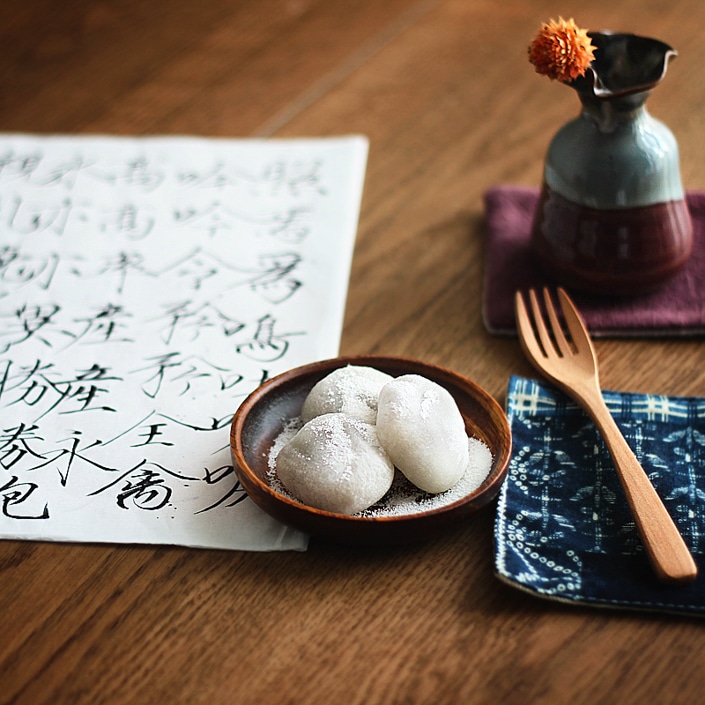A Comprehensive Introduction to Basic Chinese Grammar
Learn Chinese in China or on Zoom and gain fluency in Chinese!
Join CLI and learn Chinese with your personal team of Mandarin teachers online or in person at the CLI Center in Guilin, China.
Good news: the notion that Chinese is the world's most difficult language is woefully misguided. In fact, in so many ways, Chinese is logical and straightforward. This is particularly true when it comes to Chinese grammar. Read this article for all the tools you'll need to start building sentences and conversing in Chinese.
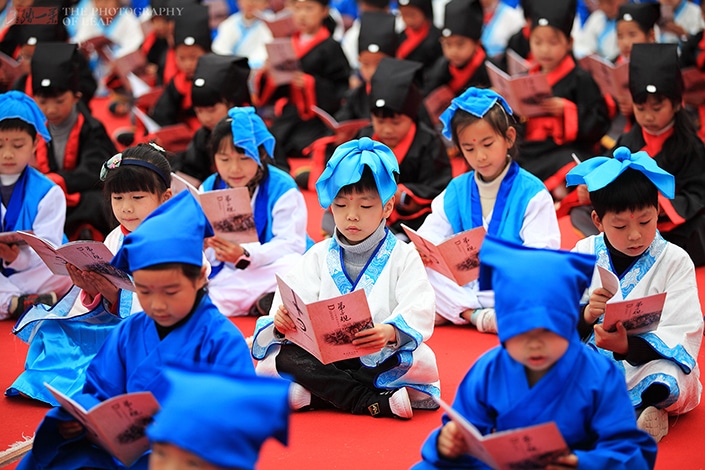
Table of Contents
Is Chinese grammar similar to English?
Chinese and English belong to two different language families. English is an Indo-European language, while Chinese is a Sino-Tibetan language. Thus, many aspects of Chinese and English differ, most notably their systems of writing.
That said, there are many amazing similarities between Chinese and English grammar:
- Chinese and English both use subject-verb-object sentence structure:
- I go to Guilin. (🔈 我去桂林 Wǒ qù Guìlín)
- She plays basketball. (🔈 她打篮球 Tā dǎ lánqiú)
- He eats food. (🔈 他吃饭 Tā chī fàn)
- The subject is "I; she; he" (我; 她; 他 wǒ; tā; tā), the verb is "go; plays; eats" (去; 打; 吃 qù; dǎ; chī), and the object is "Guilin; basketball; food" (桂林; 篮球; 饭 Guìlín; lánqiú; fàn).
- In both Chinese and English, basic sentence structure is subject-verb-object.
- There are no gendered nouns or adjectives in Chinese and English, unlike in Romance languages like Spanish and French.
- Both Chinese and English use measure words: one cup of tea (一杯茶 yī bēi chá); a pair of socks (一双袜子 yī shuāng wàzi); four bottles of coke (四瓶可乐 sì píng kělè).
Other aspects of Chinese and English grammar differ. Yet on the whole, as you'll learn in the following nine basic features of Chinese grammar, Chinese grammar is much simpler than English.
CLI highly recommends Chinese Grammar Wiki, which aims to record all grammar structures in the Chinese language, categorize them by difficulty level, explain each in clear, jargon-free English, and link them all together.
This book is the first major volume, covering all essential grammar points that an Elementary (A2) learner needs to master.
Nine basic features of Chinese grammar
If you’ve studied common Romance languages like Spanish or French, you may be wondering how Chinese deals with notoriously pesky aspects of grammar like verb conjugation.
Luckily for Chinese language students, most of these familiar grammar headaches are almost completely absent from Chinese.
Read on to discover nine unique (and easy!) aspects of Chinese grammar that will leave you feeling motivated to learn more!

There are many surprising similarities between Chinese and English grammar.
1. Subject-verb-object
At the most basic level, Chinese sentence structure is surprisingly similar to English. As in English, many basic Chinese sentences use a subject-verb or subject-verb-object structure. For example:
In the following example, the subject is 我 (wǒ, “I”) and the verb is 吃 (chī, “eat”). Click on any Chinese character in the below tables to hear its audio 🔈.
Subject-verb:
| Hànzì | Pīnyīn | English |
|---|---|---|
| 我吃。 | Wǒ chī. | I eat. |
In the following example, the subject is 她 (tā, “she”) and the verb is 去 (qù, “go”).
| Hànzì | Pīnyīn | English |
|---|---|---|
| 她去。 | Tā qù. | She goes. |
Subject-verb-object:
| Hànzì | Pīnyīn | English |
|---|---|---|
| 我去超市。 | Wǒ qù chāoshì. | I go to the supermarket. |
| 她吃面包。 | Tā chī miànbāo. | She eats bread. |
| 你喜欢猫。 | Nǐ xǐhuān māo. | You like cats. |
2. Time and place
In Chinese, the time at which something happened, is happening, or will happen appears at the beginning of the sentence or immediately following the subject.
Note that in the first sentence below, the Chinese time word “昨天” (or zuótiān in pinyin) and English “yesterday” both appear at the beginning of the sentence.
In the second example, however, the Chinese time word appears after the subject (他 tā), whereas the English time word appears at the end of the sentence:
| Hànzì | Pīnyīn | English |
|---|---|---|
| 昨天他去了超市。 | Zuótiān tā qùle chāoshì. | Yesterday, he went to the supermarket. |
| 他昨天去了超市。 | Tā zuótiān qùle chāoshì. | He went to the supermarket yesterday. |
Location words in Chinese also generally require a word order that differs from English.
When describing where something happened, you’ll usually need to construct a phrase beginning with 在 (zài). Your 在 (zài) phrase should come after time words (if any) and before the verb. This can be confusing for English speakers since location words usually come after (not before) the verb in English.
Here's an example:
| Hànzì | Pīnyīn | English |
|---|---|---|
| 我在桂林工作。 | Wǒ zài Guìlín gōngzuò. | I work in Guilin. |
| 我昨天在家看书。 | Wǒ zuótiān zàijiā kànshū. | I read books at home yesterday. |
Keep in mind that there are some exceptions to this rule. These exceptions happen with certain verbs that are used to refer to directional motion, like 走 (zǒu, “to walk”) or verbs that relate to a specific location like 停 (tíng, “to stop”) and 住 (zhù, “to live”).
Such verbs are allowed to take location complements, which are essentially 在 (zài) phrases that come after the verb.
For example:
| Hànzì | Pīnyīn | English |
|---|---|---|
| 我住在桂林。 | Wǒ zhù zài Guìlín. | I live in Guilin. |
Verbs that take location complements are exceptions, not the rule. As a beginner, the safest thing to do is to place location before the verb since this is the most common word order.

To talk about location in China, use the character 在.
3. No verb conjugation or tenses
One of the most refreshing things about Chinese grammar is the complete lack of verb conjugations.
In English, the third-person singular (he/she/it/one) form of verbs tends to be different from the others. Thus, if the subject is “I,” we say “I go,” but if the subject is “he,” then we say “he goes.”
This change doesn’t happen in Chinese. The verb 去 (qù, “to go”) stays the same no matter whether we say “I go” (我去 wǒ qù) or “he goes” (他去 tā qù). In fact, the verb stays the same no matter what the subject of your sentence is.
Observe how the verb 吃 (chī, “to eat”) stays the same in all of the following sentences:
| Hànzì | Pīnyīn | English |
|---|---|---|
| 我吃面包。 | Wǒ chī miànbāo. | I eat bread. |
| 你吃面包。 | Nǐ chī miànbāo. | You eat bread. |
| 她吃面包。 | Tā chī miànbāo. | She eats bread. |
| 我们吃面包。 | Wǒmen chī miànbāo. | We eat bread. |
| 他们吃面包。 | Tāmen chī miànbāo. | They eat bread. |

One refreshing aspect of Chinese grammar is its lack of verb tenses.
Another interesting aspect of Chinese grammar that comes as a relief to most students is that Chinese doesn’t have verb tenses.
In most Romance and Germanic languages, including English, whether something happened in the past, present or future is primarily indicated by verb tense.
Chinese, by contrast, uses something called grammatical aspect. Chinese verbs always stay the same and never need to be conjugated—in fact, they can’t be. In Chinese, time frame is simply indicated by using markers like:
- 了 (le)
- 过 (guo)
- 着 (zhe)
- 在 (zài)
- 正在 (zhèngzài)
Time frame can also be indicated by specific references to a point or period in time, like:
- 明天 (míngtiān, “tomorrow”)
- 昨天早上 (zuótiān zǎoshang, “yesterday morning”)
- 读大学的时候 (dú dàxué de shíhòu, “when I was in college”)
- etc.
Learning the proper use of these grammatical-tense indicators is drastically simpler than learning the countless verb conjugations necessary to speak Germanic and Romance languages.
These time markers can be confusing for beginners, so don’t worry if it takes some time to master them. Here are a few examples to give you a basic idea of how they work:
Notice how the verb 去 (qù, “to go”) is left unchanged and unconjugated. The marker 了 (le) is added to the end to indicate past tense:
| Hànzì | Pīnyīn | English |
|---|---|---|
| 他去超市了。 | Tā qù chāoshì le. | He went to the supermarket. |
The following example also makes use of the verb 去 (qù, “to go”), but again, the verb itself isn’t conjugated in any way. Instead, the time marker 过 (guo) is used to indicate that the event already began and ended:
| Hànzì | Pīnyīn | English |
|---|---|---|
| 我去过。 | Wǒ qùguo. | I’ve been there. |
This next sentence makes use of the verb 戴 (dài, “to wear”). As always, the verb hasn’t been conjugated. Instead, the marker 着 (zhe) has been added after the verb to indicate that the action—wearing something—is ongoing, similar to our use of “-ing” in English.
| Hànzì | Pīnyīn | English |
|---|---|---|
| 她戴着一条围巾。 | Tā dàizhe yītiáo wéijīn. | She’s wearing a scarf. |
In the following example, adding 在 (zài) before the verb 工作 (gōngzuò, “to work”) indicates that the action of working is ongoing.
| Hànzì | Pīnyīn | English |
|---|---|---|
| 她在工作。 | Tā zài gōngzuò. | She’s working. |
Keep in mind that while 在 (zài), 正在 (zhèngzài) and 着 (zhe) are each roughly equivalent to the English “-ing” in many contexts, they are generally not interchangeable and are used in different ways. This level of nuance comes up in more advanced Chinese grammar lessons.

Chinese verbs stay the same and never need to be conjugated.
In addition to time markers like 了 (le), 过 (guo), 着 (zhe), 在 (zài), and 正在 (zhèngzài), Chinese uses time words such as 昨天 (zuótiān, “yesterday”), 明天 (míngtiān, “tomorrow”), 三年前 (sān nián qián, “three years ago”), etc. to indicate when something occurred.
When you want to indicate the future in Chinese, often all that’s required is adding a future time word to your sentence.
Markers like 了 (le) and 过 (guo) are not needed. For example, 我去 (wǒ qù) means “I go.” By adding 明天 (míngtiān, “tomorrow”) before 去 (qù, “to go”), we get 我明天去 (Wǒ míngtiān qù, “I will go tomorrow.”).
Mastering the use of Chinese time markers takes practice, so as a beginner, the easiest way to indicate when something took place is to make liberal use of time words and phrases like:
- 昨天 (zuótiān, “yesterday”)
- 今早 (jīn zǎo, “this morning”)
- 三个月后 (sān gè yuè hòu, “three months from now”)
- 我在桂林的时候 (wǒ zài guìlín de shíhòu, “when I was in Guilin”)
- etc.
Here are several additional common Chinese time words to get you started:
| Hànzì | Pīnyīn | Definition |
|---|---|---|
| 早上 | zǎoshang | morning |
| 中午 | zhōngwǔ | noon |
| 下午 | xiàwǔ | afternoon |
| 晚上 | wǎnshàng | evening |
| 今天 | jīntiān | today |
| 明天 | míngtiān | tomorrow |
| 前天 | qiántiān | day before yesterday |
| 后天 | hòutiān | day after tomorrow |
| 上个星期 | shànggèxīngqí | last week |
| 下个星期 | xiàgèxīngqí | next week |
| 上个月 | shànggèyuè | last month |
| 下个月 | xiàgèyuè | next month |
| 去年 | qùnián | last year |
| 明年 | míngnián | next year |
4. Plural and singular
Many English nouns have two forms, singular and plural. For example, you can say you have “one cat,” but if you have two or more, you must add ‘s’ to the end of the noun to indicate plurality.
Chinese doesn’t work this way. No matter whether you have one or two or two thousand of something, the noun you use to describe it will remain the same. For example:
| Hànzì | Pīnyīn | English |
|---|---|---|
| 我有一个问题。 | Wǒ yǒu yīgè wèntí. | I have a problem. |
| 我有五个问题。 | Wǒ yǒu wǔgè wèntí. | I have five problems. |
| 我有九十九个问题。 | Wǒ yǒu jiǔshíjiǔ gè wèntí. | I have 99 problems. |

Most Chinese nouns stay the same no matter whether they are singular or plural.
Note that the Chinese word for “problem” (问题 or wèntí) does not change no matter how many problems you have.
Normally, whether something is plural or singular in Chinese can simply be indicated by including a number word to specify exactly how many of a thing you mean.
Alternatively, you can use vaguer words such as 几个 (jǐgè, “several”) or 一些 (yīxiē, “some”) to indicate that you have several of whatever it is. Regardless, the noun itself remains unchanged (我有一些问题, Wǒ yǒu yīxiē wèntí, means “I have some problems”).
Chinese does have a suffix, 们 (men), which can be added to some words to indicate plural, but its use is limited to certain pronouns and words referring to people.
For example, the plural form of 他 (tā) is 他们 (tāmen). Adding 们 (men) also works if you want to do something like refer to a group of colleagues 同事们 (tóngshìmen) instead of a single colleague 同事 (tóngshì).
Consider the following examples:
| Hànzì | Pīnyīn | English |
|---|---|---|
| 我们 | wǒmen | we |
| 他们 | tāmen | they (all male or mixed gender group) |
| 她们 | tāmen | they (female group) |
| 你们 | nǐmen | you (plural) |
| 学生 | xuéshēng | student |
| 学生们 | xuéshēngmen | students |
| 老师 | lǎoshī | teacher |
| 老师们 | lǎoshīmen | teachers |
| 孩子 | háizi | child |
| 孩子们 | háizimen | children |
| 女士 | nǚshì | lady |
| 女士们 | nǚshìmen | ladies |
| 先生 | xiānshēng | gentleman |
| 先生们 | xiānshēngmen | gentlemen |
| 朋友 | péngyǒu | friend |
| 朋友们 | péngyǒumen | friends |
Keep in mind that in all of the above examples, it is still possible to make the noun plural without using 们:
| Hànzì | Pīnyīn | English |
|---|---|---|
| 三位老师 | sān wèi lǎoshī | 3 teachers |
| 三十个学生 | sānshí gè xuéshēng | 30 students |
| 八个孩子 | bā gè háizi | 8 children |

Learning basic Chinese grammar rules will help you communicate like a native.
5. No noun-adjective gender agreement
Just like in English, Chinese adjectives don’t have to agree in gender or number with the nouns they modify.
Speakers of English don’t have to contend with gendered nouns, but they’re common in the European languages that English speakers often learn, like Spanish and French.
For example, in French, if a noun is feminine, its corresponding adjective must also be feminine. Thus, the masculine form of the French adjective “grey,” which is “gris,” becomes “grise” when used with a feminine noun.
Chinese adjectives experience no such changes.
To say something is grey, you can simply say it’s 灰色的 (huīsè de). Unlike adjectives in many European languages, Chinese adjectives don’t change depending on whether the noun they modify is plural or singular, either.
6. Asking questions
Asking basic questions in Chinese is also simple. The easiest way to make a question is by adding 吗 (ma) to the end of your sentence. This method can be used to turn a statement into a yes/no question. For example:
Statement:
| Hànzì | Pīnyīn | English |
|---|---|---|
| 你要去超市。 | Nǐ yào qù chāoshì. | You want to go to the supermarket. |
Yes/no question:
| Hànzì | Pīnyīn | English |
|---|---|---|
| 你要去超市吗? | Nǐ yào qù chāoshì ma? | Do you want to go to the supermarket? |
Statement:
| Hànzì | Pīnyīn | English |
|---|---|---|
| 他喜欢猫。 | Tā xǐhuān māo. | He likes cats. |
Yes/no question:
| Hànzì | Pīnyīn | English |
|---|---|---|
| 他喜欢猫吗? | Tā xǐhuān māo ma? | Does he like cats? |
For more complex questions, Chinese has question words similar to those found in English. Here’s a list of Chinese question words:
| Hànzì | Pīnyīn | Definition |
|---|---|---|
| 谁 | shéi | who |
| 什么 | shénme | what |
| 哪里 / 哪儿 | nǎlǐ / nǎ'er | where |
| 为什么 | wèishéme | why |
| 哪个 | nǎge | which |
| 什么时候 | shénme shíhòu | when |
| 怎么 | zěnme | how |
Unfortunately, Chinese question word order is different from that used in English, so you may not be able to use all the Chinese question words correctly right away.
Do not worry! Forming questions isn’t too hard and mastering the use of 吗 (ma) for yes/no questions is a great way to start.
7. Indicating possession
Another thing you’ll quickly need to learn as a beginning Chinese speaker is how to indicate possession. In English, this is normally done by adding an apostrophe ‘s’ to the end of a word, as in, “This is Xiao Wang’s cat.”
In Chinese, possession is indicated using 的 (de). This immediately follows the person or pronoun to whom something belongs. Its placement is essentially the same as the apostrophe ‘s’ in English. Thus, “This is Xiao Wang’s cat” can be translated as 这是小王的猫 (Zhè shì Xiǎowáng de māo).
If you don’t know or don’t want to use the name of the person to whom something belongs in English, then you are likely to use a possessive pronoun, such as “yours,” “hers” or “mine.”
If you’re a native English speaker, you may automatically use possessive pronouns flawlessly, but their irregularity can cause headaches for non-English speakers.

In Chinese, the character 的 is often used to indicate possession.
Luckily, Chinese possessive pronouns are far simpler than their English counterparts. All you need to do to form them is add the character 的 (de) to the end of regular Chinese pronouns.
| Hànzì | Pīnyīn | Definition |
|---|---|---|
| 我的 | wǒ de | mine/my |
| 你的 | nǐ de | yours/your |
| 他的 | tā de | his |
| 她的 | tā de | hers/her |
| 我们的 | wǒmen de | ours/our |
| 你们的 | nǐmen de | yours/your |
| 他们的 | tāmen de | theirs/their |
Here are a couple examples to give you an idea of how these possessive pronouns work:
| Hànzì | Pīnyīn | English |
|---|---|---|
| 这是我的猫。 | Zhè shì wǒ de māo. | This is my cat. |
| 你的围巾很漂亮。 | Nǐ de wéijīn hěn piàoliang. | Your scarf is beautiful. |
Using 的 (de) is the easiest and most commonly-used method for talking about possession in Mandarin. Mastering this grammar point is a quick and simple way to expand the range of things you can say in Chinese!
8. Negation
Negation is another important aspect of basic Chinese grammar that is important for beginners to master.
Chinese uses two different methods to express negation. The most common involves the use of the character 不 (bù), which roughly translates to “not,” “won’t,” or “not want to.” For example:
| Hànzì | Pīnyīn | English |
|---|---|---|
| 这条围巾不漂亮。 | Zhè tiáo wéijīn bù piàoliang. | This scarf is not beautiful. |
| 我不要去超市。 | Wǒ bù yào qù chāoshì. | I do not want to go to the supermarket. |
| 他不吃面包。 | Tā bù chī miànbāo. | He does not eat bread. |
The character 不 (bù) can be used in most situations. However, 不 (bù) can never be used with the verb 有 (yǒu, “to have”).
If the sentence you are trying to negate contains the verb 有 (yǒu), then you must use 没 (méi) to negate it. Here are some examples:
| Hànzì | Pīnyīn | English |
|---|---|---|
| 我没有猫。 | Wǒ méiyǒu māo. | I do not have any cats. |
| 他们没有面包。 | Tāmen méiyǒu miànbāo. | They do not have any bread. |
9. Measure words
Measure words are another important aspect of Chinese grammar that every beginner should be aware of.
As an English speaker, you already know how to use measure words (also called “classifiers”), which are relatively common in English. For example, we often talk about a “pair” of pants or a “slice” of cake. “Pair” and “slice” are measure words.
A major difference between English and Chinese measure words is that there are far more measure words in Chinese. Also, every single Chinese noun must be preceded by one, while in English, only some nouns need a measure word. For example:
| Hànzì | Pīnyīn | English |
|---|---|---|
| 我有一只猫。 | Wǒ yǒu yī zhī māo. | I have a cat. |
| 他喜欢这本书。 | Tā xǐhuān zhè běn shū. | He likes this book. |
Note that in both the examples above, no measure word is necessary in English, but one must be used in Chinese.
Although it’s sometimes possible to guess which measure word to use based on the shape or type of the object being modified, the bad news is that they’re a bit unpredictable. At a certain point, you’ll need to memorize which measure word goes with which noun.

It's easy to know when to use measure words in Chinese since almost all nouns take them!
The good news is that there’s a general measure word, 个 (gè), that can be inserted before any Chinese noun in a pinch.
个 (gè) is the most common Chinese measure word, so if you opt to use it when you aren’t sure, chances are you may get lucky and create a correct sentence! Don’t worry. Even if you get it wrong, people will usually still be able to understand you.
Here are several common Chinese measure words:
| Hànzì | Pīnyīn | Definition |
|---|---|---|
| 个 | gè | most common measure word |
| 只 | zhī | measure word for animals |
| 本 | běn | measure word for books |
| 辆 | liàng | measure word for vehicles |
| 块 | kuài | measure word for pieces of objects and for money |
| 封 | fēng | measure word for letters |
| 张 | zhāng | measure word for flat objects, like paper |
| 瓶 | píng | measure word for bottles |
| 杯 | bēi | measure word for cups |
| 双 | shuāng | measure word for pairs (of things) |
The wonderful world of Chinese grammar
Hopefully this article has helped you gain a basic understanding of Chinese grammar and left you feeling energized and ready to learn more!
Before putting your new-found knowledge into practice, consider expanding your overall Chinese vocabulary using this list of the 100 most common Chinese characters and some trusty hand-made or digital Chinese flashcards.
If you're interested in expanding your mastery of Chinese language basics, you should also check out our article on how to say "yes" in Chinese. You can also consider these tips for learning Chinese online.
Keep in mind, though, that if you really want to take your Chinese to the next level and learn to use the above grammatical structures almost without even thinking about them, Chinese language immersion in China is the best and most effective method. We hope to see you soon in Guilin!

Learn Chinese online with CLI to improve your Chinese grammar and overall language skills.



